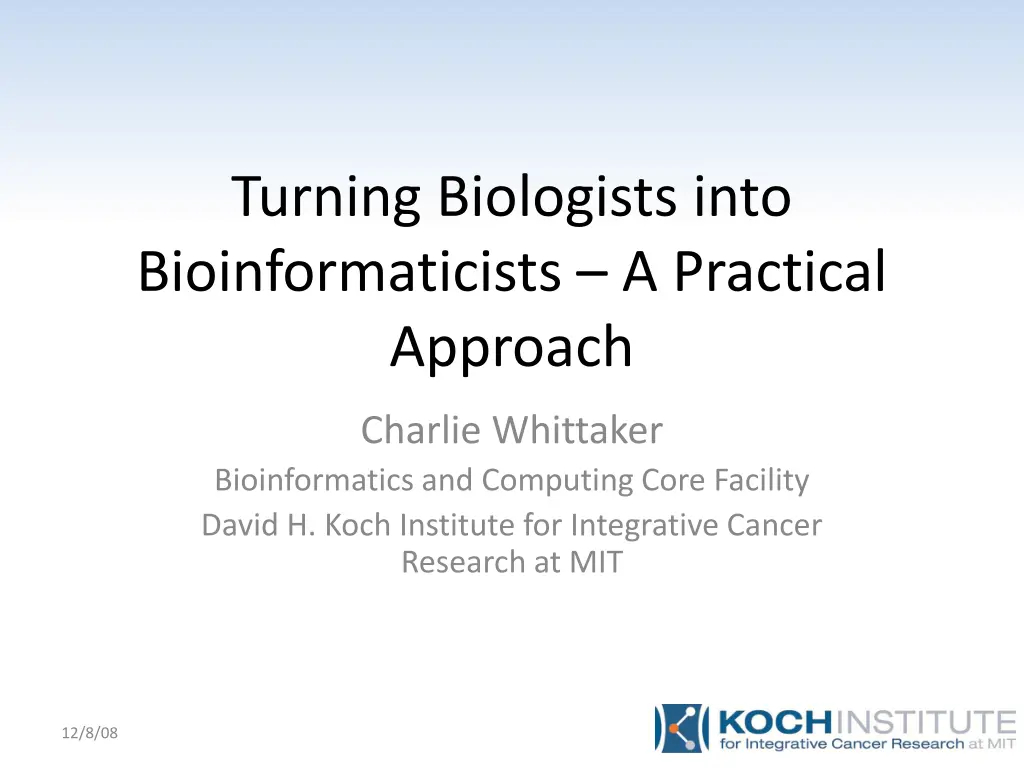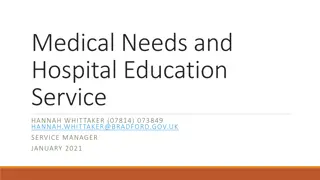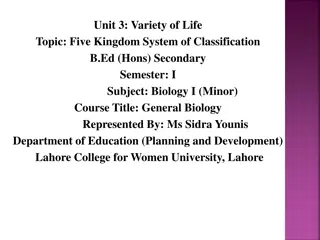
Empowering Biologists with Bioinformatics Training
Explore the journey of biologists transitioning into bioinformaticists at the David H. Koch Institute, MIT. Overcoming computational challenges in biology research through assessment activities and understanding the necessity of integrating computing skills. Discover the importance of bridging gaps between biology and technology for effective research outcomes.
Download Presentation

Please find below an Image/Link to download the presentation.
The content on the website is provided AS IS for your information and personal use only. It may not be sold, licensed, or shared on other websites without obtaining consent from the author. If you encounter any issues during the download, it is possible that the publisher has removed the file from their server.
You are allowed to download the files provided on this website for personal or commercial use, subject to the condition that they are used lawfully. All files are the property of their respective owners.
The content on the website is provided AS IS for your information and personal use only. It may not be sold, licensed, or shared on other websites without obtaining consent from the author.
E N D
Presentation Transcript
Turning Biologists into Bioinformaticists A Practical Approach Charlie Whittaker Bioinformatics and Computing Core Facility David H. Koch Institute for Integrative Cancer Research at MIT 12/8/08
About the Koch Institute Multi-disciplinary operation consisting of MIT molecular geneticists and cell biologists and engineers. Research Force 24 Biology and Engineering Faculty 170 Postdoctoral Fellows and Associate Scientists 175 Graduate Students 70 Undergraduates 70 Technical Staff The Swanson Biotechnology Center supports KI research 15 core facilities from glassware to flow cytometry. One facility is our Bioinformatics and Computing Core (BCC). The roles of the BCC include assistance, collaboration and training. The three BCC members can t keep up with demand.
Biology Research and Computing Biology is an increasingly quantitative field requiring sophisticated computational methods. Genomics Genome-wide annotation analyses Microarrays Massively Parallel Applications NextGen Sequencing High-Throughput Screening Automated Imaging Many biologists are underprepared to meet the computational demands of their research. Some have systematically avoided computing throughout their careers.
Assessment Activities Survey was designed to identify barriers to learning Intimidation: Every time I see a blinking cursor I freak out. Lack of awareness: Why do I need to know about this, it is why I have a Mac. Dependency: I have a Grace. and to assess users computing skills Participants were observed while executing four bioinformatics tasks (file management, text summary, numerical analysis, text processing). Graded on a,b or c scale a struggled b completed task but not easily c completed task easily
Assessment results 1. File Management 1. Numerical Analysis 1. Text Summary 1. Text Manipulation 3/10 had computer books of some kind at their desks (blue bars). 7/10 of participants want an easily accessible reference resource. 4/10 expressed frustration or intimidation with command line computing. 3/10 felt they knew all they needed to know about computers.
The Problem GA Tech Students Mark Guzdial MS Faculty Summit 2008 Computing should be taught to everyone. Context leads to time-on-task leads to effective learning. Computer Science Computer Scientist Biologists Relational Databases Statistics Data Management Programming Bioinformaticists
The PowerPoint Phenomena Late 90s PowerPoint presentations went from rare to ubiquitous in less than a year. Incredibly useful tools encourage the investment of time and rapidly become commonplace!
The Illumina Phenomena? 128000 Images (880Gb) per Experiment (8*100*4*40) ~5 million 40-letter sequences <50% KI capacity for 1 year sequenced the mouse genome 3X Gene Expression Analysis Genomic Composition Analysis Genomic Variation Analysis Mixture Characterization Examining these data with point-and-click tools is nearly impossible. Command-line tools are simple and effective (Unix utilities, Perl, MySQL, R)
Nuggets of Computation Information The material should be contextually relevant. Nuggets should be useful for both initial instruction and subsequent reference. An example during the survey this command was demonstrated: awk $3 >= 8 numbers.txt|wc l A week later awk '($16 == 1) && ($23 != $16) && ($30 == $16)' dpnRun_stock.txt | wc -l
Presenting the Nuggets Formal training sessions 26,28,30 January 2009 Small group sessions Training during collaboration Walkabouts Website development Online lessons Video tutorials
Challenges What are the ideal training strategies? What is the optimal way to archive the nuggets? Web-based hierarchies or wizards Wiki capture users contributions How can we monitor our training progress?





